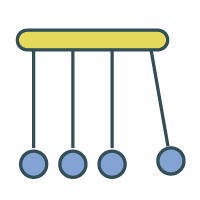Đề thi chọn học sinh giỏi tỉnh Long An môn tiếng Anh lớp 12 - Vòng 1, bảng B (có đáp án)
Nhằm giúp các bạn chuẩn bị thật tốt kiến thức để làm bài thi đạt hiệu quả cao, Vndoc.com xin giới thiệu: Đề thi chọn học sinh giỏi tỉnh Long An môn tiếng Anh lớp 12 - Vòng 1, bảng B (có đáp án).
Đề thi chọn học sinh giỏi môn tiếng Anh:
| SỞ GIÁO DỤC VÀ ĐÀO TẠO LONG AN (Đề thi chính thức) | KỲ THI CHỌN HỌC SINH GIỎI LỚP 12 CẤP TỈNH - VÒNG 1 Ngày thi: 06 / 10 / 2011 Môn thi: TIẾNG ANH Bảng: B Thời gian làm bài: 180 phút (Không kể thời gian phát đề) |
A/. LISTENING (20 points)
You will hear a short conversation twice. Each question in this part has four answer choices. Choose the best answer A,B, C or D. Write your answer(s) on your paper.
1. What is the speaker’s main point?
(A) Professional resumé writers can make a lot of money.
(B) Resumé are easier to write than letters.
(C) Resumé should be written carefully
(D) Computers can make resumé writing easier
2. According to the speaker, what can you do if you are not sure of the meaning of a word? Choose 2 answers
(A) Look it up in dictionary.
(B) Ask a friend how to spell it.
(C) Guess the meaning.
(D) Look it up online.
3. Why should you choose your words carefully?
(A) You want people to think you’re passive.
(B) Some words sound alike but mean different things.
(C) Words are very personal.
(D) Words are very interesting.
4. Why should your resumé look professional?
(A) More people will read it.
(B) It could be published.
(C) An employer may decide to see you or not because of it.
(D) You will make more money.
B/. READING AND WRITING (80 points)
I/. Read the passage carefully and answer the questions. Write your answers on your paper. (20 points)
One day more than 200 years ago a man complained to his doctor that he had a ball in his throat. “It goes up and down when I breathe”, he said. The doctor laughed at him and said, “There is nothing in your throat”.
Soon after the man died and the doctor discovered that there was a steel ball in his throat. This unfortunate man worked in needles factory and in the process of grinding steel to make the needles, he had breathed in particles of it which soon accumulated and formed a lump in his throat. Ever since that time workers in factories producing needles have had to wear masks to protect themselves.
Needles were first used by the Stone Age man about 50.000 years ago to stitch together pieces of pelt to make clothes. At the time primitive men used the bones of animals and fish, and even thorns, to make ‘needles’- rough stone tools with a hole in one end. Later the Romans and the British used iron and bronze for making needles.
Today’s needles are made from steel wire. When you examine a needle it looks quite a simple object but there are fifteen different stages a steel wire has to go through before it becomes a needle. Let us look at some of them.
First the worker cuts a steel wire into the length of two needles. Then he straightens out the wire and sharpens it at both ends. At the center he pierces two eyes: this forms two needles joined end to end. Usually machines are used to break up the needles; only very good quality needles are broken by hand.
The needles are by no means ready yet. They must go into a special machine which removes the rough edges from around the eye of each needle. After this the worker puts all of them into a small furnace called a ‘muffle’, and when the needles are red hot he plunges them into a container of cold oil. This process is repeated many times to harden the needles and give them elasticity. Washing, rolling and polishing follow, after which needles are put into packets for sale.
You can see needles everywhere today, in your home and in the hospital where they are used as surgical instruments. Compasses and record-players too require different types of needles. The Stone Age man would indeed be amazed if he could see how many uses we have made of his simple invention.
1. Why did the doctor laugh at the man who went to him with a complaint?
2. Was the doctor right in laughing at the man? Why?
3. How had the steel ball formed inside the man’s throat?
4. Why do workers in needles factories wear masks?
5. Why are the needles heated and then cooled many times?
II/.Use the words below to fill in the blanks. Each correct word is only used once. Write the words in the corresponding numbered places on your paper. (30 points)
Passage 1 (10 points)
well – which – works – also – after – grew – order – from – where – as
Leonardo da Vinci is perhaps most famous for his (1) . . . . . . . . . . . . . . . of art. Among his more well-known paintings are the “Mona Lisa” and “The Last Supper” Leonardo was an accomplished painter but he was (2) . . . . . . . . . . . . . . . an architect, a sculptor, an engineer, a scientist and a musician. He was one of the most talented men of all time.
Leonardo was named (3) . . . . . . . . . . . . . . . the town of Vinci
(4) . . . . . . . . . . . . . . . he was born. Leonardo da Vinci actually means “Leonardo of Vinci”. He
(5) . . . . . . . . . . . . . . . up in the busy city of Florence which was then a center of education and of the arts. Leonardo did not receive much formal education. He became an apprentice to a painter and sculptor. Verocchio, (6) . . . . . . . . . . . . . . . whom he learned his craft. He conversed with the scholars and noblemen who came to order works of art and learned much from them.
Leonardo was a very curious and creative person. He believed that (7) . . . . . . . . . . . . . . . an artist, he had to acquire an understanding of objects in (8) . . . . . . . . . . . . . . . to paint them well. Before he embarked on a new painting, he would find out all the information he could gather about the subjects he was painting. He would also draw sketches of these subjects in a notebook.
When he was alive, he was accepted as a very learned man. The breath of his knowledge can be seen in more than thirty of his notebooks (9) . . . . . . . . . . . . . . .are still intact today. The notes and drawings in the notebooks included plans for a tank, a helicopter as (10) . . . . . . . . . . . . . . . as a detailed study of the human anatomy.








